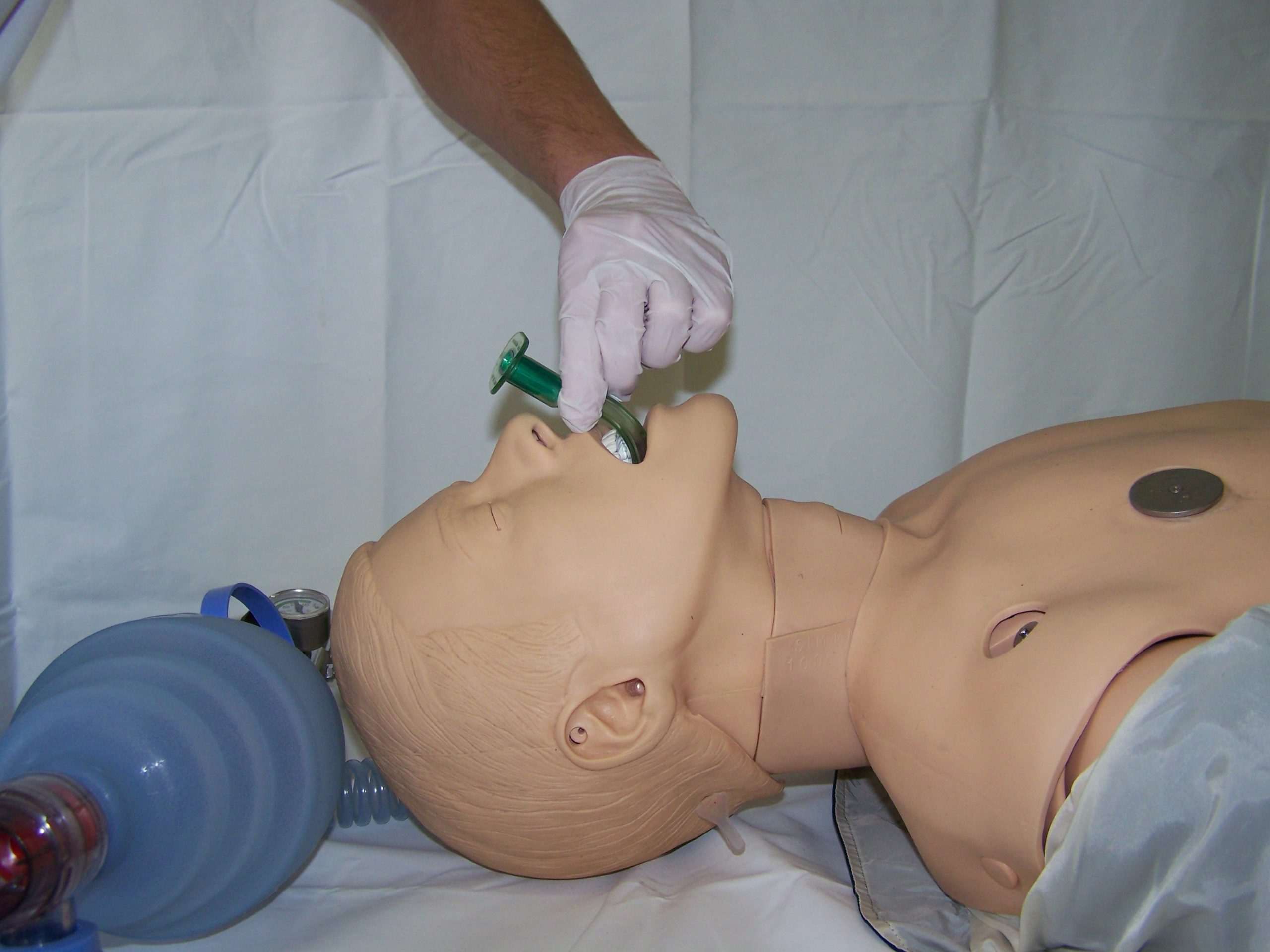Equipment
- Protective gear, protective gloves, protective mask, and goggles
- Aspirator with the appropriate suction tubing and container •
- Oropharyngeal tubes of different sizes •
- Magill’s forceps
Procedure
- Apply personal protective measures
- Stand beside the patient’s head, if possible
- Check the oral cavity and remove any inappropriate contents if necessary
- Measure the oropharyngeal tube – the size of the tube corresponds to the vertical distance between the incisors and the angle of the lower jaw
- Turn the tube with the tip facing towards the palate (the concave side of the tube facing the patient’s palate), press the tip against the hard palate, gently slide it along the palate to the soft palate – be careful not to push the tongue backward during this process
- Then gently rotate the tube 180 degrees and push it inward until it lies in the throat
- Record all actions in medical documentation
In the case of the appropriately sized tube that is correctly positioned, the horizontal ring on the outer side should fit on the lips, and the reinforced flat part should be between the patient’s teeth/gums. If the tube is too long (protrudes from the mouth) or too short (gets stuck in the oral cavity), it should be immediately removed and replaced with a new one of the correct size. If there is a gag reflex, coughing, or signs of other protective reflexes, stop immediately with the tube placement and remove it. The oropharyngeal tube is removed without turning, holding the flat ring of the tube and pulling it down towards the chin.
IMPORTANT The oropharyngeal tube can also be used to protect against biting an endotracheal tube, in which case it should be placed directly without rotation. Then, make a loop on a regular gauze, loop the endotracheal tube and oropharyngeal tube, wrap the ends of the gauze around the patient’s head, and tie them on the side of the head.
SPECIFICS FOR CHILDREN In children, the oropharyngeal tube is placed directly; the concave side of the tube faces the patient’s tongue. In smaller children, it may be necessary to press the tongue with a spatula before placing the tube.



0 Comments